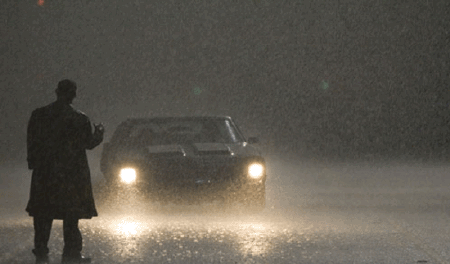
SECOND AX:
the resurrections of 3 disgraced horror mongers
~ by JOHN CRIBBS ~
People who are fans of horror movies tend to fear the opinions of people who are not fans of horror movies. Whenever one of my parents used to walk in the room where I was watching a gory selection from the genre, I always felt as guilty as if they had caught me viewing a porno. I suppose the problem is that we always assume non-horror fans put the act of horror film screening on par with dissecting animals or flashing old ladies on the subway.
To them, we fear, we're
nothing but a bunch of sick voyeurists who sit in dark rooms with no pants on watching and rewatching scenes of terror and mutilation while huffing paint from a paper bag. Whoever made up the stupid phrase "torture porn" would certainly seem to be one of those types (just now, as I was looking up the term to see if I could find out who specifically made it popular, a picture of Bijou Phillips from Hostel Part II bound to a chair with a gag in her mouth crying in agony came up - somebody crossed
behind me and I quickly minimized the page: a good example of what I'm talking about here.)
That kind of (largely) unfounded fear exists in the mind of the horror viewer and even adds to the guilty excitement popping in a copy of a movie deemed "unrepentantly gruesome...an affront to all that is decent and tasteful!" comes with, but I've always wondered if the people who make these movies care what the "normies" think of them. Does a filmmaker like David Cronenberg or Clive Barker ever
second guess what he's doing because he's suddenly concerned what they'll think in Cleveland? Do they imagine filmgoers saying, 'Who MAKES these films? He must be a degenerate pervert who was raped with a rusty shovel in a damp basement growing up." Whether these filmmakers worry about their reputations in middle America, it's just another thing we loyal followers of their work lose sleep over.
The point is that, while most directors of scary movies are the very emblem of an upstanding citizen - John Carpenter, Wes Craven, Tobe Hooper - there is the occasional horror auteur who will misstep in their personal life and reinforce the nefarious stereotypes us horror fans are afraid other people may have of them. This is a look at three filmmakers involved in scandals right out of a horror movie and, more specifically, the horror movies they made in the aftermath
and how their dirty deeds were reflected in their later work.
Just remember not to judge all of us by a couple bad apples: these guys might make some good movies, but their actions away from the set (or, in the case of two of them, ON the set) is not endorsed by the horror community at large. We may enjoy watching movies featuring decapitations, perverted predators and innocent victims who are horribly killed... but that doesn't mean we want to hear about those sort of things happening in the real
world.
CASE #1
john landis

Pre-scandal horror film: An American Werewolf in London (1981)
The Scandal: July 23, 1982. While filming at 2:20 am for the Vietnam sequence of his segment of The Twilight Zone: The Movie, Landis was horrified when his orders of "Lower! Lower!" resulted in a helicopter crash that killed actor Vic Morrow, who was decapitated by the propeller, and two child extras. The circumstances of that night's shoot - actors trudging through water while explosives ignited around them and the chopper hovered dangerously
overhead - added to the criminally negligent approach of those involved in the tragic accident.
The children had been hired illegally and kept around for filming long after curfew; the option to use dummies instead of live actors had been dismissed by Landis, who "didn't think that would work." Cautions from on-set firemen that the explosives were too close to the helicopter were not reported, concerns from the kids' parents that the scene might be "too dangerous" were hastily quelled
and crew members so overwhelmed by the pyrotechnics that they were forced to abandon their cameras and sound equipment to seek refuge from the intense heat did nothing to delay production. Fingers were pointed after the fact (the pilot even went so far as to blame Morrow for not using the "five seconds" afforded him to clear the helicopter as it crashed and save himself and the children) but Landis was the central figure of controversy, and found himself the target of various inevitable lawsuits.
Oddly enough, it was studio interference that indirectly led to the accident. It was decided that Landis' segment, an obvious moral tale about a racist who is forced to experience life as the minorities he so abhors, didn't have a sympathetic enough protagonist. To show that Morrow's character learned to care about those he had previously showcased bigotry towards over the course of his magical ironic adventure, Landis included a
scene where he tries to rescue two Vietnamese children from American soldiers, uttering to them the now deeply unfortunate line, "I'll keep you safe, kids! I swear to God!" In the ensuing four years of courtroom drama, Landis appeared deeply repentent - even ill-advisedly showing up at all three funerals and giving an unwelcome eulogy at Morrow's - while insisting he wasn't slightly responsible for what happened. He was ultimately ruled not guilty on charges of manslaughter, but found he was
unable to escape the popular consensus: Landis was the movie's co-producer and director of the segment being shot, he should have been aware of the dangers and realized the risks involved in the late-night shoot.
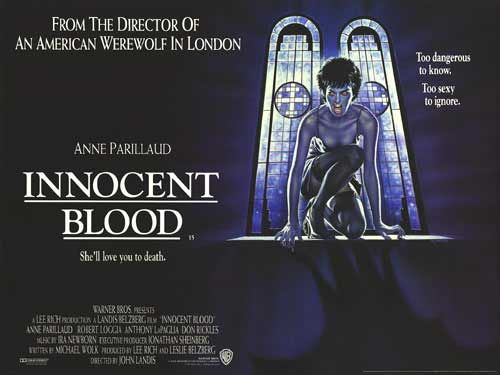
Post-scandal return to horror: Innocent Blood (1992)
After directing Michael Jackson's iconic Thriller video, Landis dove into production on Trading Places and for the next ten years stuck to harmless comedies centered around an increasing number of celebrity filmmaker cameos. Jack Arnold, David Cronenberg, Jonathan Demme, Richard Franklin, Terry Gilliam, Ray Harryhausen, Jim Henson, Russ Meyer, Frank Oz, Sam Raimi, Don Siegel and Steven Spielberg all turned up in various small parts that seemed more like
"look who I know!" bragging than legitimately fun "find the filmmaker" easter eggs. Although he cut his teeth on the low budget comedy-horror film Schlock, Landis was never a disciple of the Roger Corman school, although it appears that he was under that impression. After a number of increasingly lame "down with black culture" comedies he apparently hit a wall after another controversy and lawsuit involving the allegedly plagarised story of Coming to America and
started revisiting his greatest hits. There was Amazon Women on the Moon, a series of comedy skits made 10 years after Kentucky Fried Movie. In 1998 he soiled the memory of another dead actor by replacing John Belushi with John Goodman in a sequel to The Blues Brothers, which met with much derision. And in between he tried to recapture the dark comedy and gory pathos of An American Werewolf in London by switching from werewolves to vampires with Innocent Blood.
Transplanting the narrative from the depressing city of London to the even more depressing city of Pittsburgh, Landis focuses on a lonely female vampire played by Anna Parillaud who only feeds on vicious criminals. She starts snacking on members of a mafia gang but things go bad when she fails to finish off their boss, Sal "The Shark" Macelli (Robert Loggia), thus inadvertently imbuing him with the same super vampire powers. This is a pretty workable premise,
but sadly the movie just keeps missing the runway and ends up stalling from one interminable scene to another with no idea how to make it fun. The script, the only one written by documentary filmmaker Michael Wolk, does a good job setting up Parillaud's character but fudges on the the romantic subplot involving Anthony LaPaglia's bland cop hero, who for his part is forced into cliched interactions with a ball-busting captain played by Angela Bassett (she would reprise this exact same performance as the ball-busting
principal in Wes Craven's Music of the Heart.)
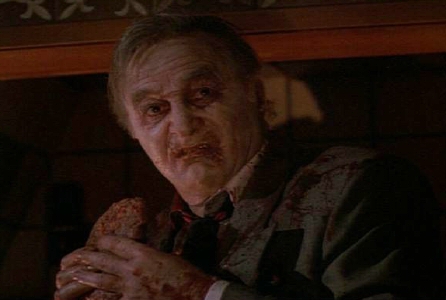
It probably seemed like a good ploy on Landis' part to bring Parillaud overseas after her star-making turn in Nikita, but her often impenetrable accent makes her as poor a narrator as she is a relatable lead character. Unlike David Naughton in American Werewolf, she isn't experiencing her transformation for the first time so it's hard to understand what she's going
through. Loggia, who sort of stands in for both the Naughton and Griffin Dunne characters as a normal person becoming a supernatural being who's also walking around in a rotting undead body, is even less sympathetic as a smarmy villain. He tries his best to save the movie and gets a lot out of his trademark throaty yelling - unfortunately he's cursed with such unworkable lines as "I can hear an angel fart!"
For his part, Landis tries to convince the audience that they're having a good time, throwing
in a bevy of b-movie clips from Horror of Dracula, Phantom of the Rue Morgue, The Beast from 20,000 Fathoms (in a lame gag involving the famous "cop chomp" scene that was used to better effect in Joe Dante's Gremlins 2 two years earlier) and Strangers on a Train. And, of course, his usual "these are my buddies!" filmmaker cameos including special appearances by Michael Ritchie, Sam Raimi, Tom Savini
and Dario Argento (Argento's is, admittedly, pretty funny.) Almost all of his decisions are head-scratchers, the least of which his replacing ironic use of moon-related classic pop songs by Bobby Vinton and Sam Cooke from Werewolf with ridiculous dance numbers by Rhythm Syndicate (you know that cheesy R & B group who had the pseudo-Prince single "P.A.S.S.I.O.N." in 1991?) There are one or two Sinatra songs in there as well, but somehow that doesn't make up for the inclusion of "Sexitivity."
A French Vampire in Pittsburgh isn't a total loss - it has its moments. Don Rickles' death, with its incredible special effects and pitch-perfect scream provided by the great Linnea Quigley, is every bit as amazing as the transformation scene in American Werewolf - how come nobody ever talks about it? Stuart Gordon's frequent cameraman Mac Ahlberg provides some of his weird trademark interior lighting, although not to the full effect he achieved on movies like
Re-Animator and Dolls. It has the same problems as American Werewolf, especially in the comedy department, but those problems are much more prominent in Blood, which has a lot less good qualities to make up for them.
Reflections of the scandal: Not many, besides the title which in context of the death of the two children on the set of Twilight Zone becomes rather off-putting and a thin-haired decomposing character actor (Loggia) wearing a grayish-blue suit that looks uncomfortably similar to the one worn by Morrow the night of his death.
Recovery: Landis' career plunged into unrecoverable hell after Innocent Blood's unremarkable opening with the horrible Beverly Hills Cop and Blues Brothers sequels only slightly more embarrassing than 1996's The Stupids. As far as returning to the genre, his "Masters of Horror" episode was awful, but then again so was almost everybody's, including Joe Dante. The jury is awaiting his upcoming Burke & Hare
film starring Simon Pegg and Andy Serkis (who, unfortunately, replaced David Tennant due to scheduling problems) and the Kevin Corrigan-starring "crime-thriller" Some Guy Who Kills People, a title that some people may still look at as a reference to the director of the disastrous Twilight Zone segment himself.
CASE #2
victor salva
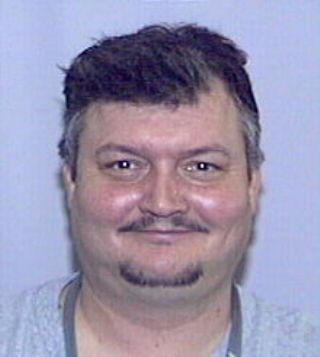
Pre-scandal horror film: Clownhouse (1989)
The Scandal: Shortly after the film's release it was disclosed that Salva had sexually abused Clownhouse's 12 year old star, Nathan Forrest Winters, on the set of the film. Winters, who had also appeared in Something in the Basement, Salva's 1986 short film that caught the attention of Francis Coppola and led to Coppola helping the director finance his feature debut, alerted police to Salva's activities. This led to the unearthing of several pornographic
videos including one of Salva and Winters engaging in oral sex. Salva pleaded guilty to one count of lewd and lascivious conduct, one count of oral copulation with a person under 14, and three counts of procuring child pornography. Sentenced to three years, he was paroled in 1992 after 15 months and registered as a sex offender.
All this came to national attention when, in the weeks leading up to the release of the Disney film Powder, Winters and his mother formed a committee to boycott the film's distribution after learning that Salva was the director. They handed out fliers on the street that read "Please don't spend your money on this movie, it would just go to line the pockets of a child molester." Although the film (which featured the unfortunate tagline "An extraordinary
encounter with another human being") was a live action, PG13-rated drama and was technically produced by Disney's subsidiary company Touchstone Pictures, the studio still claimed ignorance over the accusation that they had employed a sex offender.
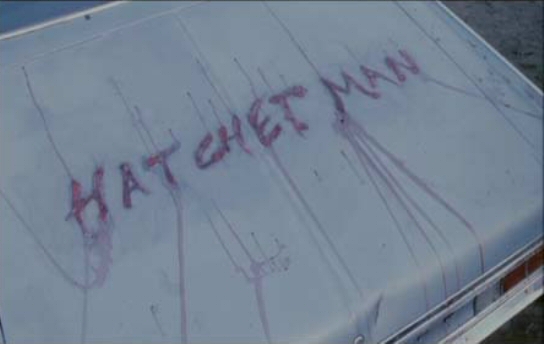
Post-scandal return to horror: The Nature of the Beast (1995)
Proving that nobody pays any attention to horror movies, Salva's first film after being released from prison actually wasn't Powder, it was The Nature of the Beast, which made its debut at the Brussels International Festival of Fantasy Films in March 1995 and came out straight to video in America on October 24th. Granted, an R-rated horror film about a killer known as "Hatchet Man" hacking up unsuspecting travelers as part of a blood-soaked
road trip doesn't lend itself to any moral entanglements should the director be unmasked as a former child molester.
There are no kids in the movie, or even 29-year-old actors who are supposed to be kids, only a midget of consensual age. But it goes to show how little these kinds of movies are thought of that nobody cared when Salva directed this one as opposed to the huge deal made over him working for the Walt Disney Corporation (which must have made some kind of conscious decision in the 90's to seek the employment
of horror auteurs, based on the hiring of Salva as well as Stuart Gordon and Brian Yuzna - both, to my knowledge, not pedophiles.)
Lance Henriksen plays a jittery businessman escaping in his car from an unknown location with a briefcase he never lets out of his sight. A string of roadside murders seems to be following him, along with a sinister drifter named Dusty (Eric Roberts) who finds out what's in the case and blackmails Henriksen into letting him tag along for the ride. The plot is similar to Psycho, if instead of Marion Crane arriving at the hotel Norman Bates came along on the trip.
The duality of killer and unwilling accomplice also recalls Henry: Portrait of a Serial Killer, but mostly The Hitcher (see Case #3). In particular that movie's strong homoerotic subtext, which in Beast ranges from the subtle (Roberts repeatedly taunting Henriksen with innuendo like "I'll show you mine, you show me yours") to flagrant (Roberts returning from a threesome to a disgusted Henriksen in their hotel room and telling him "I thought about you, Jack...could you
feel it?") Then there's a song coming from the radio as Henriksen looks at Roberts with the lyrics "Who's that I see sneaking up on me? Sweet misery, my old loverboy."
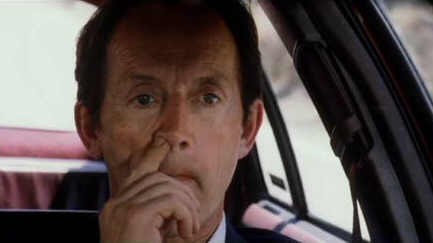
Although the set up is familiar and the twist ending is obvious about 5 minutes into the movie (hell, you can probably figure it out from my description of the plot), there's a lot to recommend it, not least of all a deadly gila monster, an orgy in a van with a couple hippie drug pushers, a forced heroin overdose, a premature burial and a final reel appearance by the late,
great Brion James.
Eric Roberts actually comes off more menacing than he ever has, and of course Henriksen is great as always. They work well together trading off psychological manipulations, playing cat and mouse, and have weird bonding moments you wouldn't expect from their contentious relationship. There's a good amount of dark humor and macabre, so it's never boring. Overall the film has the feel of a good 90's road movie like Kalifornia or Love & a .45, but also has that unique
Salva feel (hm - that didn't sound right), the kind that makes you want to take a shower after watching it.
Reflections of the scandal: Salva once claimed that Powder, about a baldheaded albino teenager with milky white skin and magic powers (his mother was struck by lightning while pregnant, sort of a mesh-up of The Elephant Man and The Natural) who is ridiculed by kids at his high school came from his experiences being bullied by inmates while incarcerated. They probably gave him a hard time more because of the child molestation than any magic
powers he might possess, but his time within the California penal system is also echoed in Nature of the Beast. Roberts claims to be an ex-con, and tells Henriksen that he spent enough time in prison and church "to know true boredom."
He also explains to Henriksen the meaning of the phrase "dead man walking" (funnily enough, Beast came out the same year as Tim Robbins' film, which did not go out of its way to explain the title.) At one point Roberts becomes so enraged by
Henriksen's apathy towards his problems that he gets in his face and barks, "I've slept in places you wouldn't shit in! I've done time with men who would!" His stint in the slammer was still on Salva's mind, although the victims of "Hatchet Man" in the movie are faceless characters we never learn much about, suggesting that he wasn't ready to examine the role between tormented and tormentor.
Recovery: He was ready by 2001, when he released Jeepers Creepers, in which a "creeper" stalking a young male victim (Justin Long) who appears throughout the film to be discovering his own sexuality. Salva made the film for Zoetrope and Coppola, who remained supportive of Salva while in prison and visited him every week. At its heart it's is a classic monster movie, one popular enough to have two sequels follow (Jeepers
Creepers 3: Cathedral is due out next year) and give the director his career back. Still, it's hard not to see Salva as the real "creeper."
CASE #3
eric red
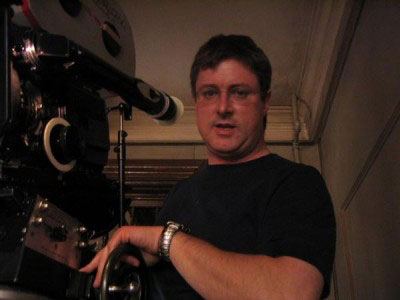
Pre-scandal horror films: The Hitcher (86) and Near Dark (87) - screenwriter; Body Parts (91) and Bad Moon (96) - writer/director
The Scandal: May 31, 2000, 6:30 pm in West LA. An Accord was sitting at a red light when it was rear-ended by a black 1994 Jeep Grand Cherokee Laredo. When the Accord driver exited the vehicle to swap insurances, the Cherokee struck his car in front of him a second time, jackknifing it into oncoming traffic. It then charged forward at 40 miles per hour against traffic, jumped the curb and obliterated a bus stop, an outdoor patio of
tables and a 26-year old English student. It blasted through the plate glass window of a pool hall, crashing into its bar and pinning two more people behind it. The act of apparent road rage concluded with something truly disturbing: the driver, screenwriter and director Eric Red, exited the jeep, seemingly in a daze, picked up a shard of glass, and proceeded to slash his throat. Witnesses tackled the filmmaker and stopped the bleeding until ambulances arrived, but although Red ultimately survived two of his
victims didn't.
After the incident, Red - who had been working on pre-production of a film called Teacher's Pet which he planned to film with Pamela Anderson - claimed he had suffered from a recurring syncopal episode which must have disoriented him long enough to cause the accident, although very little evidence exists that he was being treated for such a condition. The strange event is made all the eerier by Red's association with the violent road
movies leading up to it: scenes of characters being run over by cars or trucks are featured in The Hitcher, Near Dark, Blue Steel (both written for Kathryn Bigelow) and Undertow (which Red also directed.) Even Body Parts deals with a man who loses his arm in a car crash, and the non-horror Cohen and Tate has one of the killers musing about running over animals and quizzing his partner “What’s the last thing that goes through a bug’s brain when he hits your windshield?”
An unproduced screenplay written in 1999 titled Highway to Hell was about a truck possessed by a serial killer that wreaks havoc on the Texas freeways, with the driver stating "It's my truck that's killing people, and I can't walk away and say it ain't my responsibility." Another unrealized script was Fenderbent, about a society of miscreants who target and run down pedestrians for fun...co-written by Red AFTER the 2000 accident.
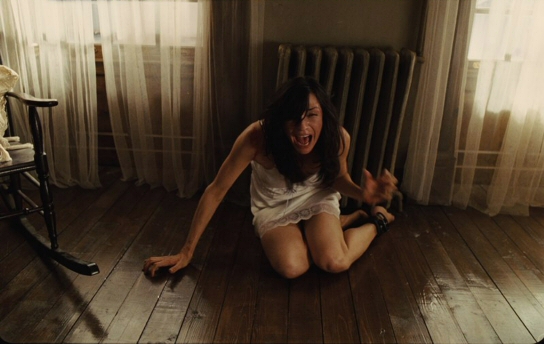
Post-scandal return to horror: 100 Feet (2008)
Apparently he either couldn't get the funding for those last two projects or made the wise decision to stay away from the highway for a while, because what he ended up doing eight years down the line was a single-set spook story in which Famke Janssen is terrorized by the ghost of her abusive husband, who she up and blew away one day out of self defense. Only problem is, she went to jail for it and is now out on house arrest with an ankle
bracelet fixed around her foot to prevent her from going any further than 100 feet from the proximity sensor.
This is a pretty good premise. For one thing, it settles the age old question "Why doesn't she just get out of the house??" She has to stay in there and she can't tell anyone what's happening because they'll think she's crazy, a gruff cop already has it in for her, so she's forced to figure out how to get rid of her jerk poltergeist husband all by herself. She comes up with the idea from a handbook
on ghosts that getting rid of all his possessions will cause the evil spirit to vacate the residence and so sets about doing just that, initially unaware that his belongings include a big stack of cash left under a crawlspace. With pulpy plot developments like that the movie should be a fun, quick-paced thrill ride but the single set becomes boring to look at before too long. As is the problem with several ghost movies, the specter becomes to outwear his welcome in the narrative without being scary or threatening... for
most of the film, anyway.
The film really picks up in its last half hour, starting with a scene where Janssen fucks a kid who delivers her groceries to spite her ghost husband as he floats above the bed watching. His retaliation is to beat the poor guy to death the next morning in a scene that's actually so violent that I found it difficult to watch. Usually when somebody's getting an invisible beatdown in a movie it's funny, but here it's absolutely gruesome. The
cops storm Famke's house and she has just enough time to hide the corpse in the crawlspace and compose herself before they haul her back to jail. The gruff cop ends up giving her the business in the downstairs hallway as the boards under the corpse just above their heads start to give way (the same kind of thing that happens at around the same point in Nature of the Beast, when Brion James' sheriff only needs to turn around to witness a hastily-buried Eric Roberts' arm reaching out of the ground.) "It
would be hilarious if the corpse fell on the cop's head," I thought, expecting that this was just another empty build-the-suspense sequence, but Red actually goes through with it and has the body fall through the ceiling right on top of the cop! Well done, Mr. Red.

Unfortunately committing to this awesome decision forces Red to speed up the conclusion, so the climax is pretty clunky. It's too bad: Red's previous films aren't exactly known for their strong female characters, moreso ones who are drawn and quartered by semi-trucks, and Famke deserves a better ending. She's actually fantastic in the film - much better than Shia
LaBeouf in Disturbia. She reacts convincingly enough to the effects, which is good because they need it. Although the effect of black smoke stripping off the phantasm is cool, kind of like the wraiths in Lord of the Rings, the most effective moments are the more subtle ones, like when Janssen is looking up the dark stairs and knows the ghost is descending them from the blinking light on the sensor suddenly disappearing as he crosses in front of it.
I was surprised to learn that the film had a healthy
10 million dollar budget; it looks like it was shot digitally and the CGI looks (charmingly) cheap. Most surprising was that the ghost turns out to be Streets of Fire's Michael Paré (at least until a skimming of his filmography reveals that his more recent appearances include roles in Komodo vs Cobra and Ninja Cheerleaders.)
Reflections of the scandal: It would appear that Red had the good sense to leave any vehicular mayhem out of his first post-scandal project, but there's still one moment that sticks out. It's extremely subtle, but it's nonetheless noticeable in one of the very few exterior establishing shots when a toe truck carrying a wrecked car passes by the front of the building. I'm sure Red meant this as a visual reference to the metal thrashing
thrillers of his car-related movies, but given the context of his "episode" the shot is unnerving. "It is ludicrous and sensationalistic to draw a parallel between a filmmaker's work and real-life tragedy," Red told LA Weekly.
Recovery: A recent remake of The Hitcher and upcoming one of Near Dark, neither of which Red was directly involved with. But looking him up I noticed that coincidentally he and Victor Salva each had a short story published in the same short story compilation, Dark Delicacies III: Haunted. Salva's is a melodramatic Nazi zombie tale that goes on too long while Red's is about an amateur rapper who ends up being tortured
to death by a big shot producer in a recording studio. Both stories are fine, but their respective writers should consider keeping their day jobs. At least we can assume that no one was molested or killed in the creation of the stories. But the latest is that Red is in pre-production on the "car chase thriller Stopping Power." Well, back to the old drawing board.
